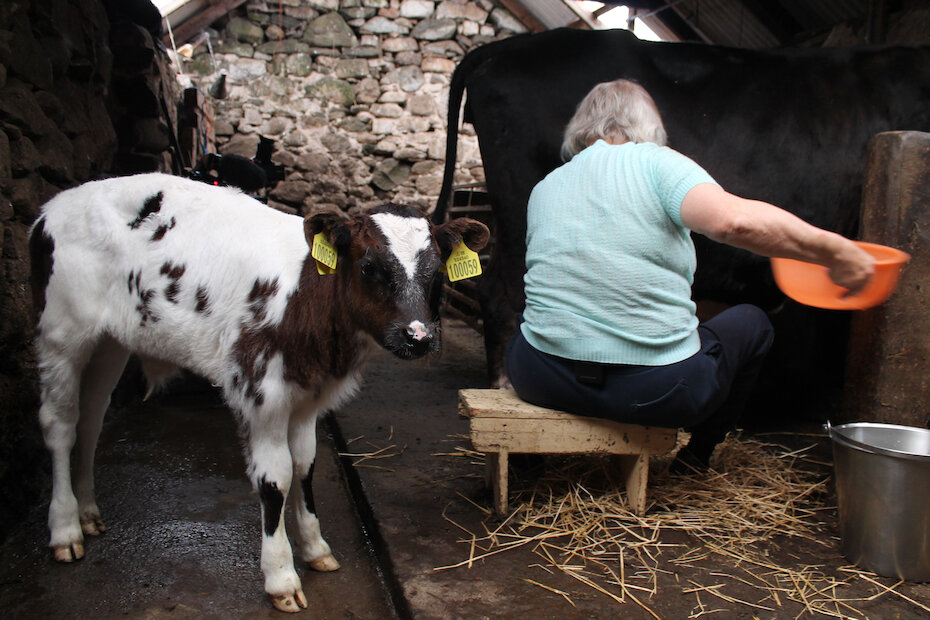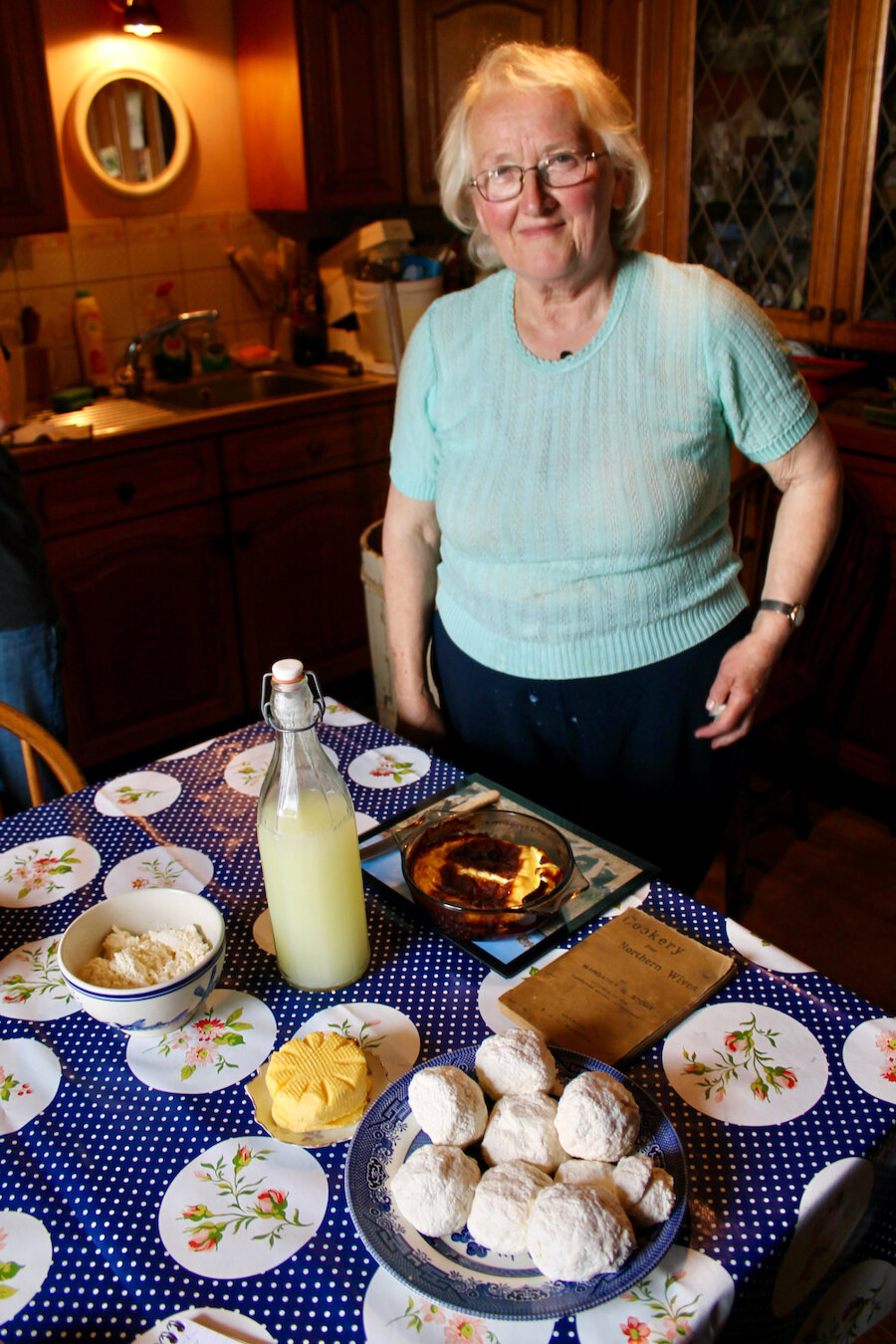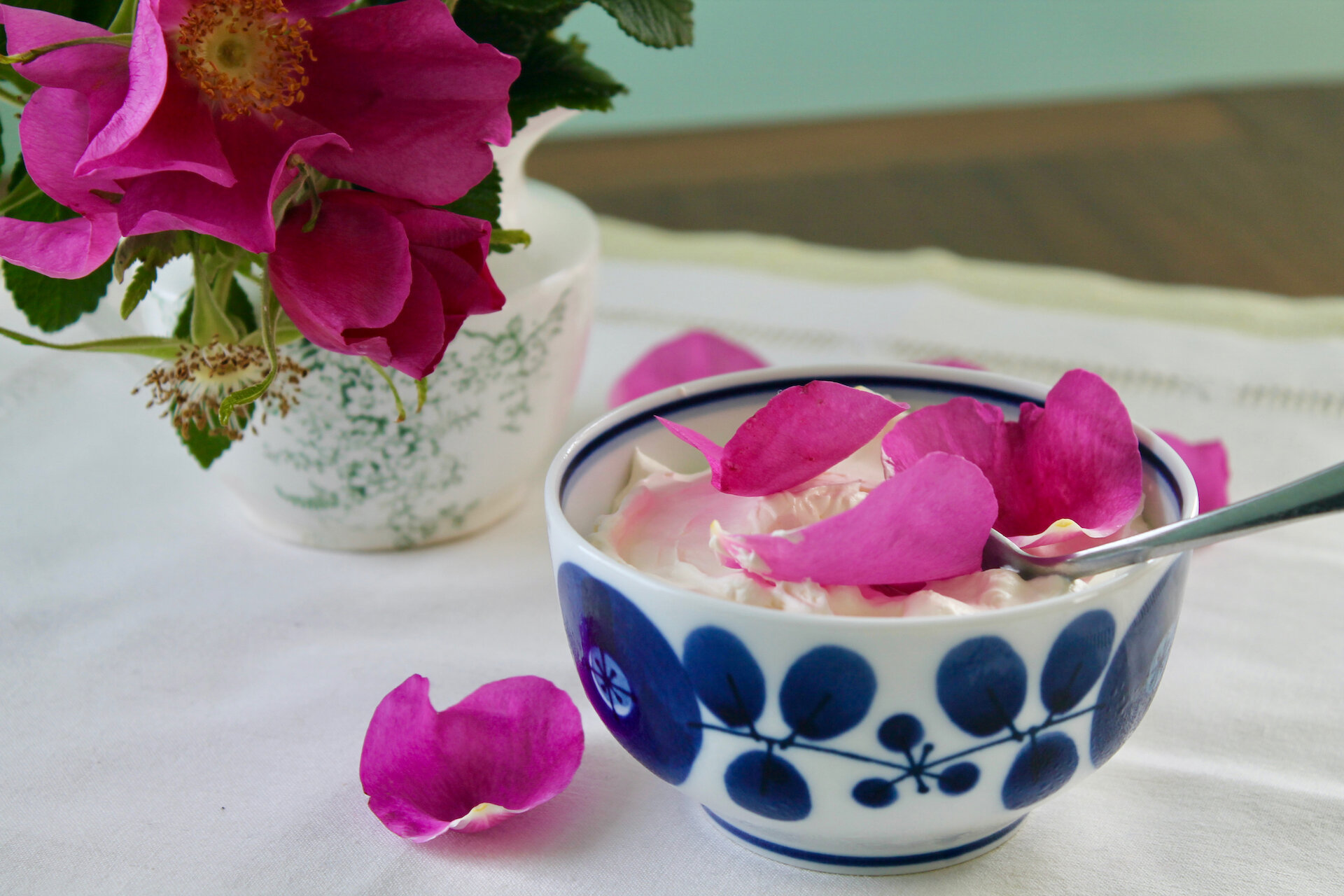I recently had the great privilege and pleasure of spending some time with Pearl Young in Westerskeld. She generously agreed to work with Taste of Shetland on their short film dedicated to some of Shetland’s heritage dairy produce. Pearl grew up on a croft in Westerskeld and learnt how to cook beest, kirn butter, make run milk, kirn milk and blaand as part of everyday croft life. She was brought up as part of one of those generations for whom hard work and a waste-not-want-not approach are deeply ingrained.
Wasting any of the milk her small herd of pedigree Shetland kye produce is unthinkable for Pearl. She and her husband Willie, tend a small traditional mixed croft on the West Mainland of Shetland, rearing Shetland kye, sheep and chickens as well as growing Shetland kale, tatties and as much of their own grazing and fodder as possible. Making use of all the produce that comes of their hard work on the croft entails a further workload that most of us simply would not contemplate. Yet for Pearl, this was the very lifestyle she missed while she was living away from Shetland, during the first years of her career as a staff-nurse.
When she and her family moved back to Shetland, what she wanted most was a piece of land and animals to tend. She had missed that sense of space, freedom and self-sufficiency that is still possible in Shetland. She also missed the flavours of her childhood and the connection crofting had given her to what was on her plate and how it was produced.




